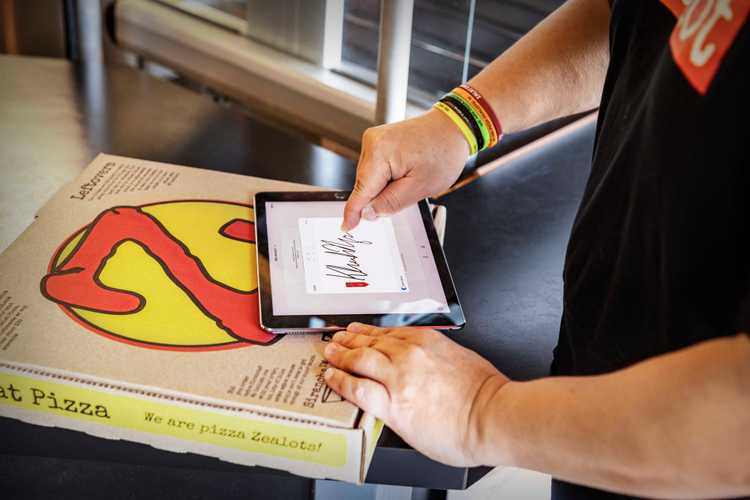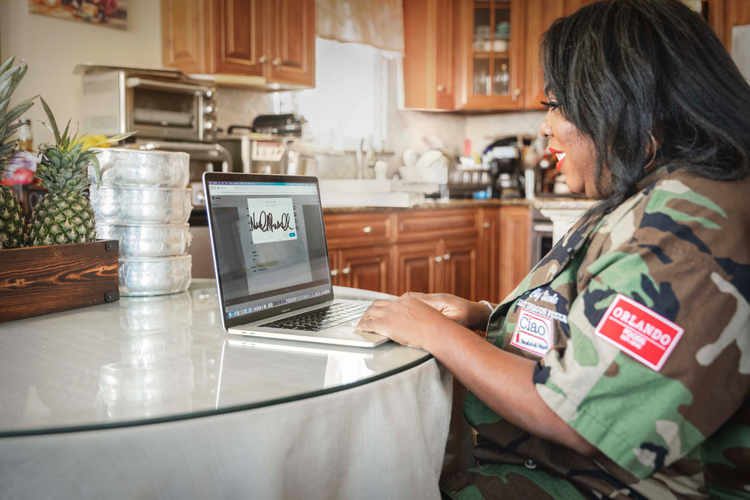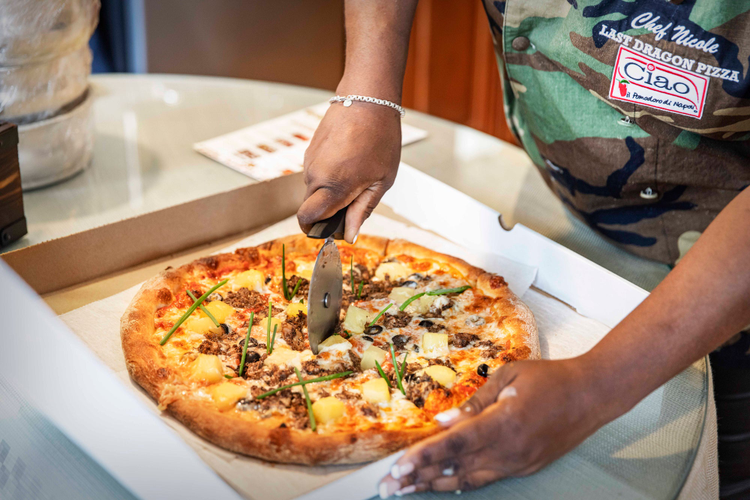Digital tools give pizza entrepreneurs a bigger slice of the pie

Khanh Nguyen is glad people have stopped asking for calzones at his pizzerias.
Nguyen is the owner of Zalat Pizza, a Dallas-based pizza chain that specializes in unique flavor combination pizzas such as the “Pho Shizzle,” a savory slice topped with pho-inspired ingredients like hoisin and cilantro, or the “Pineapple Express” combining bacon, pineapple and teriyaki. Today, around 90 percent of the chain’s sales come from pizza, which is the result of Zalat’s deliberate focus on quality over quantity on their menu. That means no calzones.
For Nguyen, this product specialization strategy reflects the new realities of running a pizza business. At a time when food delivery platforms make it easier than ever for hungry customers to find the exact items their taste buds crave from virtually any local spot, he believes that restaurants must specialize to stand out.
“In this new world it’s not important to have a menu that caters to everyone,” Nguyen said. “What is important is conquering your space to make sure you’re the best at what you’re offering.”
Menu development is just one of the ways in which pizza businesses have had to update their strategies and operations to thrive in recent years. The pizza business, like the overall restaurant industry, has been reshaped by the development of new tech and major trends such as the rise of third-party delivery apps and “ghost kitchens” that emerged in response to the COVID-19 pandemic. According to the National Restaurant Association, more than 100,000 bars and restaurants closed in 2020, due to revenue shortfalls caused by a combination of government-mandated shutdowns and growing customer discomfort with dining in.
“Everywhere you look, you’re seeing a lot of changes happening in this business,” said Nicole Russell, the owner of Last Dragon Pizza, an all-online pizzeria based in Queens that ships frozen pies across the country. Russell is nothing short of a pizza expert and is the host of the First We Feast YouTube show, Pizza Wars, where she goes head-to-head with renowned pizza makers to craft the best slice. Last Dragon Pizza is known for its creative pizza options — from the “7th Heaven,” a tandoori chicken masala option to the “Kiss Mi Converse,” a spicy jerk chicken style slice. All of her pizzas can be ordered exclusively through her website.
“Especially with the pandemic, a lot of people got a chance to feel things out and see if they liked the way their businesses were operating, or if they wanted to change some things. A lot of people feel as if the ‘pick up’ model is the way to go now and don’t want to go back to the old ways of doing things,” she said. “It’s just lower overhead and less drama.”
Going (and staying) digital
Both Russell and Nguyen said that digital tools have been the secret sauce for helping them sustain and grow their businesses during this challenging period for the food service business.
Zalat, for example, has thrived because it made a strategic bet that online ordering was the future of the industry – a bet that paid off. Today, nearly all its revenue comes from digital sales, which have propelled the business to new heights. Thanks to its growth, the chain has opened a new location every month and has no plans to slow things down.
With all those new locations have come a slew of contracts and other documents that Nguyen and his team have had to sign. Completing that paperwork using Adobe Sign and Adobe Acrobat to share, collaborate and sign has made the process very efficient, giving Nguyen and his team the time to focus on bigger picture items, like menu optimization. Today Zalat is “100 percent digital in terms of document retention. We’re in 2021, so there’s really no need for paper records,” Nguyen said.

Digital tools have also proven critical for Russell to run Last Dragon Pizza over the years. Shortly after starting her business in 2014, she won a $10,000 grant from the Queens Economic Business Plan, which allowed her to build a mobile pizza cart that she ran from the Rockaway Beach boardwalk. Because she spent much of her working hours away from her computer, she needed mobile apps that would allow her to run her business while on-the-go.
“I’m storing and referencing important PDF documents in Acrobat every day,” Russell said. “And Lightroom mobile has also been an incredible tool. In the food business, photography is everything and Lightroom allows me to easily edit photos on my phone that are perfect for social media or the website.”
Today, working from home, Russell also recently began using Adobe Sign e-signatures within Acrobat and the Adobe Scan mobile app as part of her workflow, quickly signing documents, collaborating with vendors and capturing receipts whether she’s in the kitchen or on the go.

“All of these tools are really important for me. I’m not sure how I could have operated without them,” Russell said.
